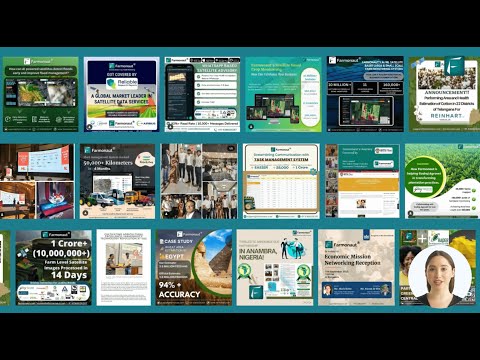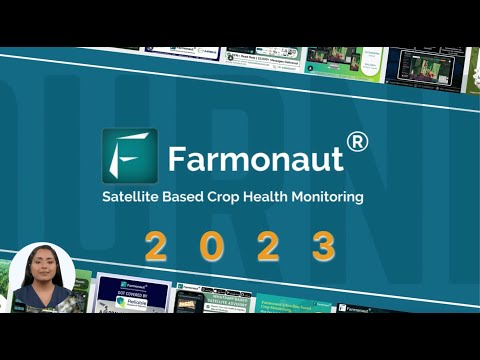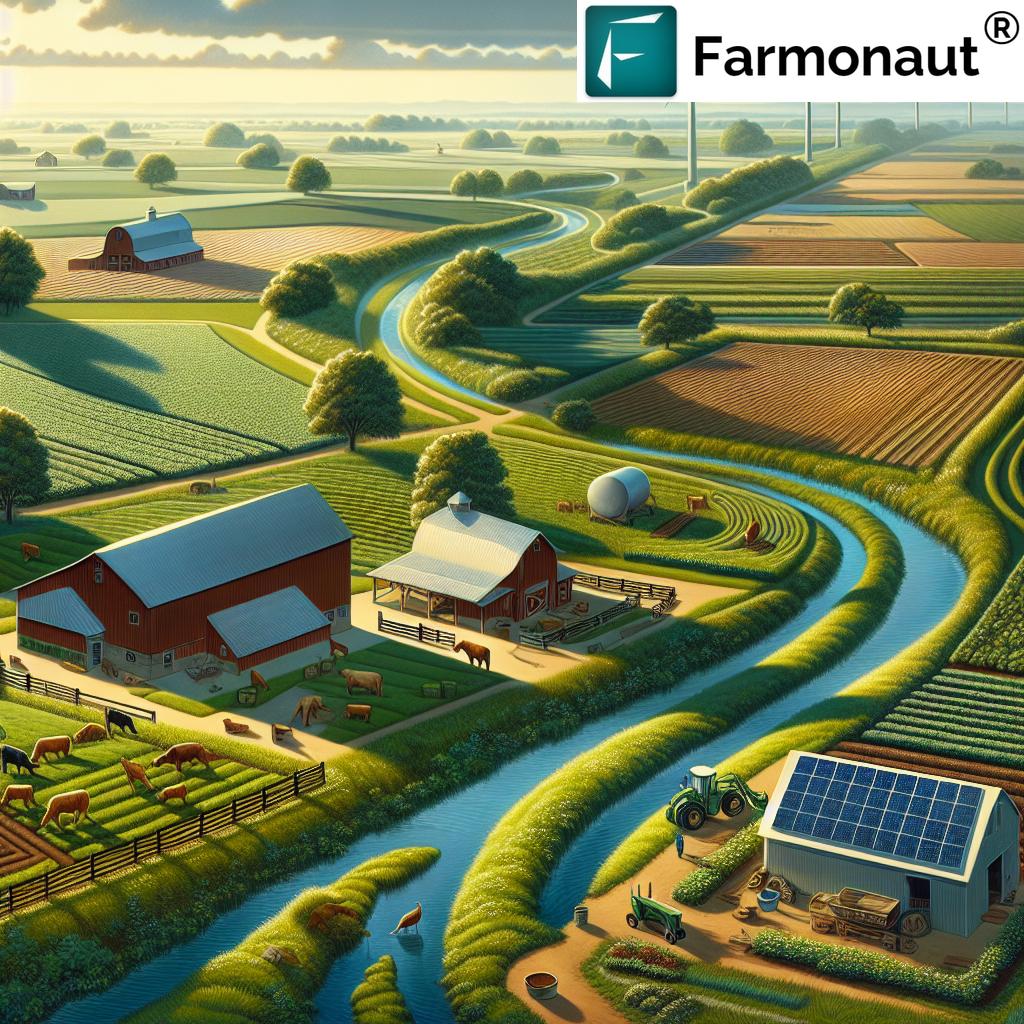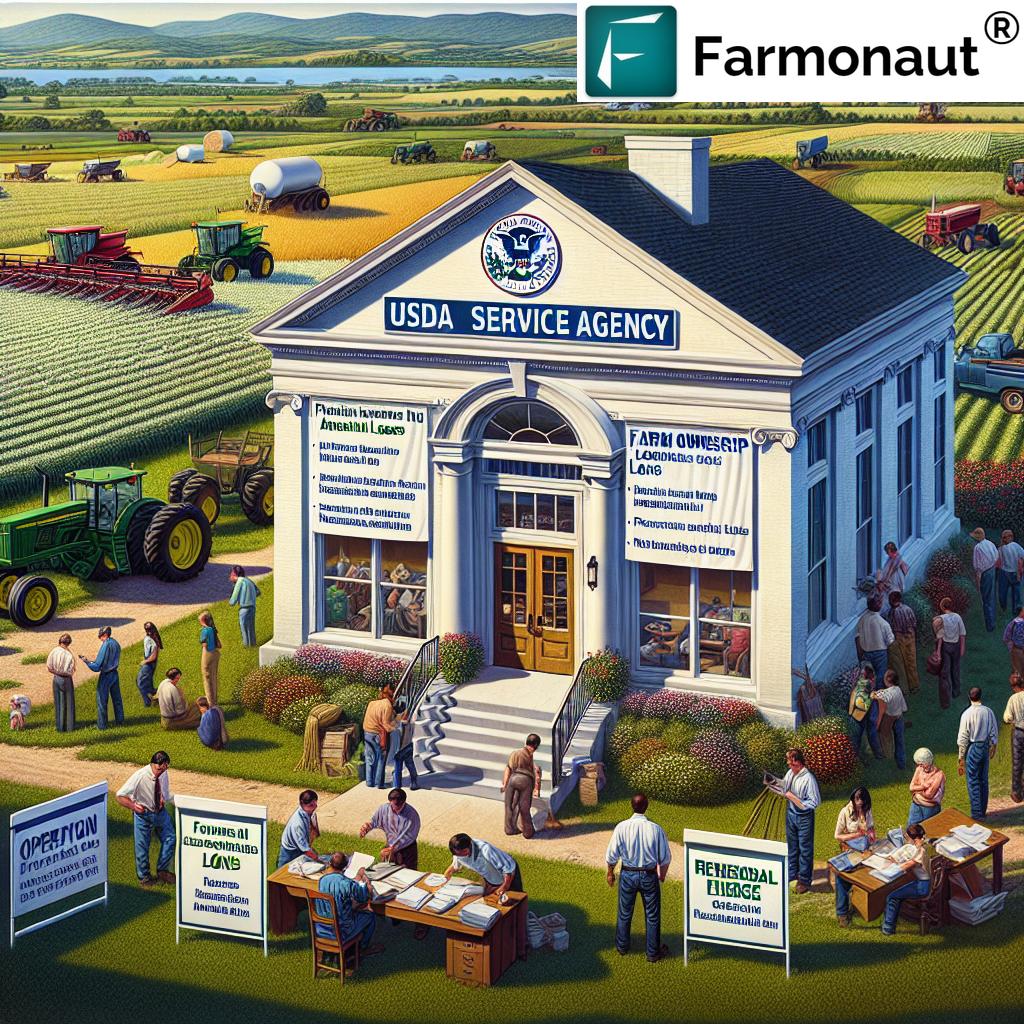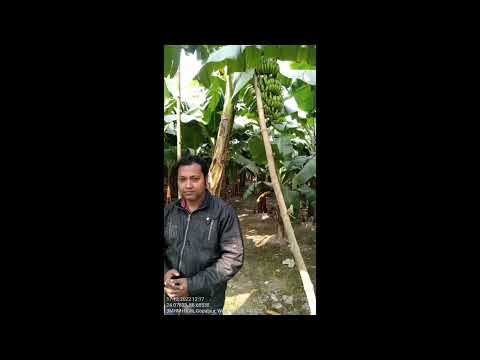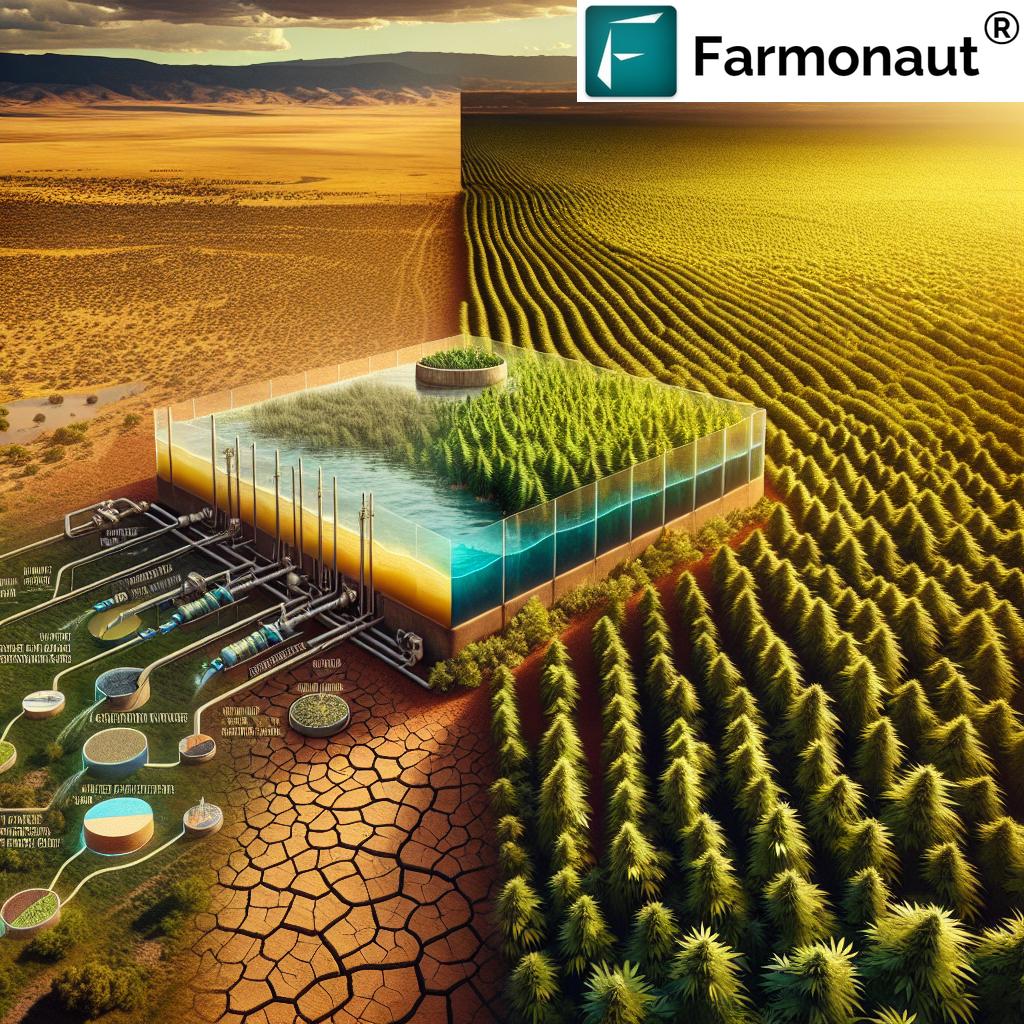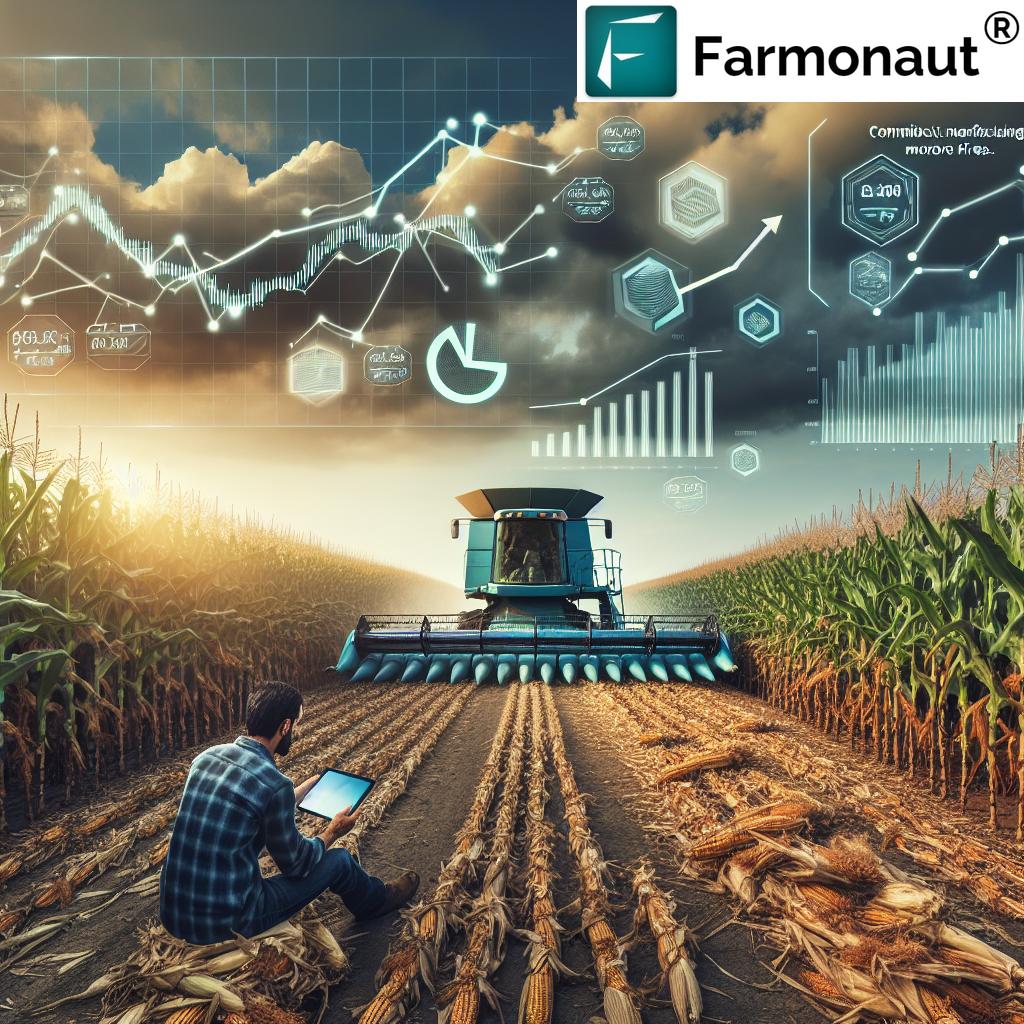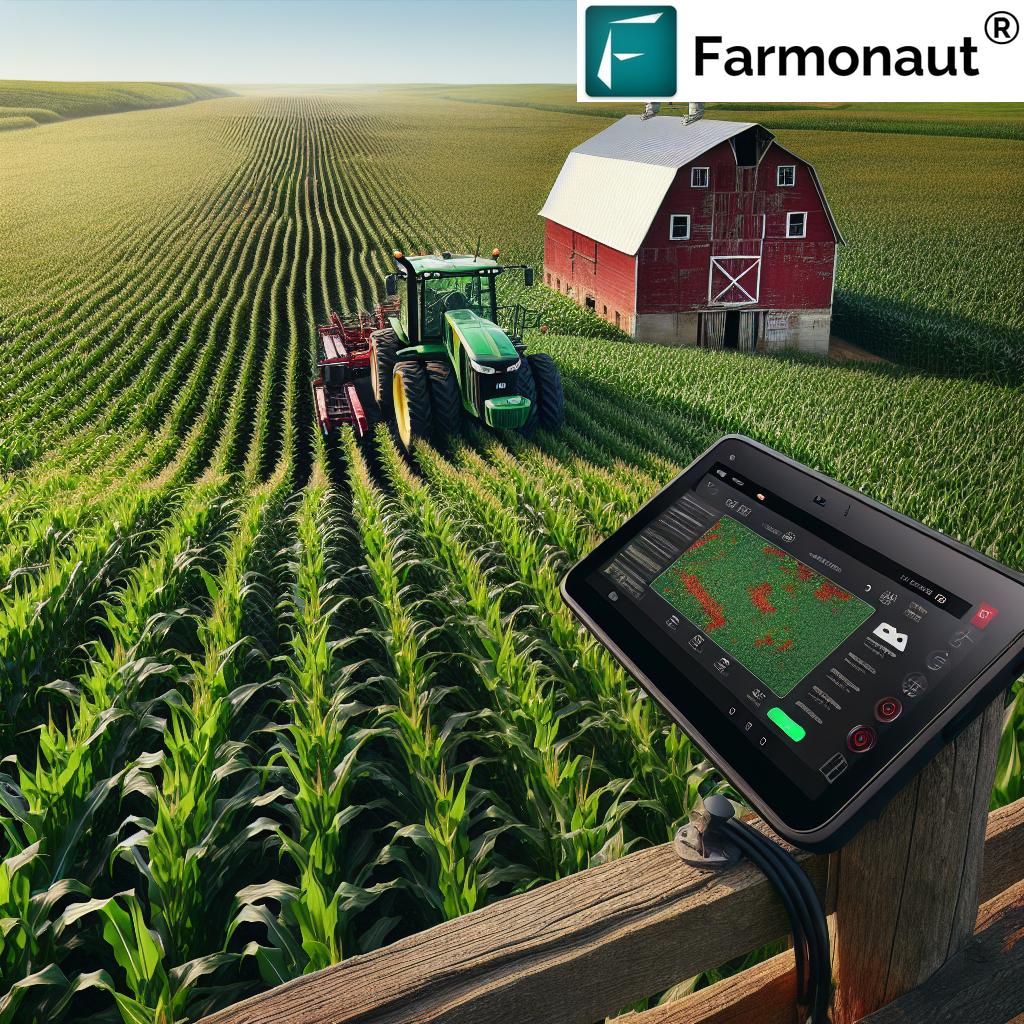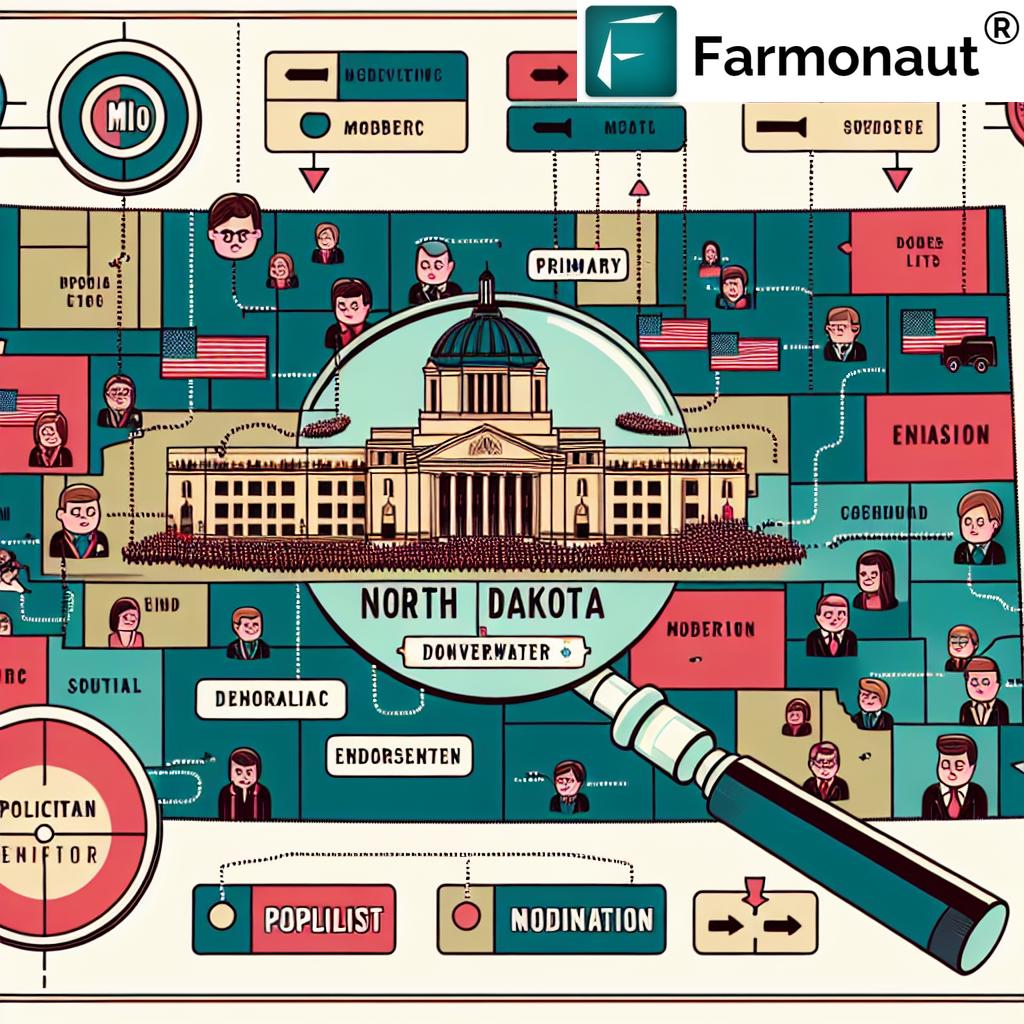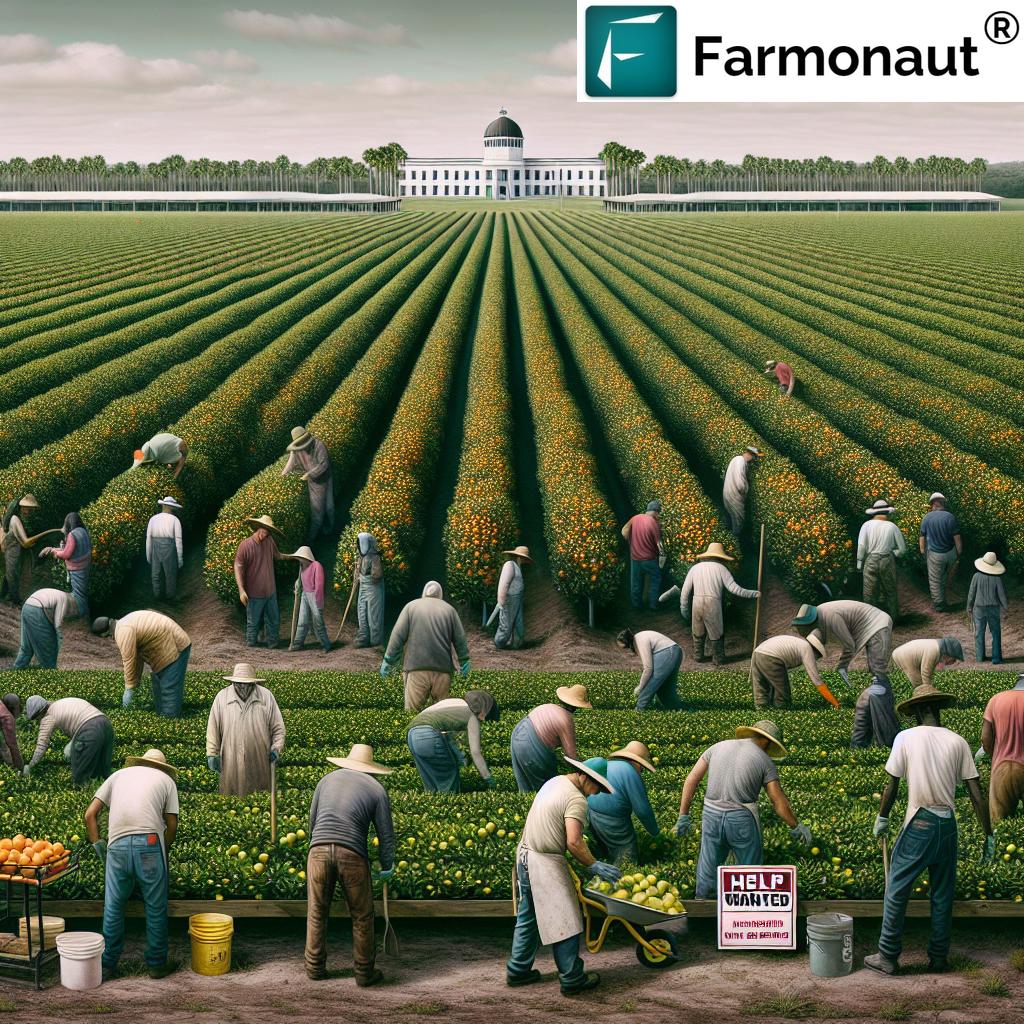Contents
- Introduction
- USDA Financing Programs: An Overview
- Farm Ownership Loans
- Farm Operating Loans
- USDA Conservation Programs: Saving Land, Water & Wildlife
- Rural Development Business Grants & Financing
- USDA Financing: Key Developments in 2025
- Farmonaut’s Role in Agricultural Financing & Sustainability
- Comparison Table of Major USDA Financing Programs & Grants (2025)
- Frequently Asked Questions
- Conclusion
“Over $40 billion in USDA loans and grants supported U.S. farmers and rural communities in 2023 alone.”
USDA Financing 2025: Powerful Programs & Grants for Farmers
As we look into the agricultural outlook for 2025, the United States Department of Agriculture (USDA) continues to be a cornerstone of support for our nation’s farmers, ranchers, and rural communities. USDA financing programs span conservation, farm and ranch loans, rural development grants, and innovative environmental incentives that substantially enhance farm operations, expand access to capital, and foster rural prosperity. With notable keywords such as farm ownership loans, conservation reserve program, environmental quality incentives program (EQIP), rural development grants, and renewable energy grants for farmers at the heart of these opportunities, understanding the scope and latest developments is crucial for all agricultural stakeholders.
Staying informed about USDA funding for minority farmers, new conservation and environmental stewardship initiatives, and real-time market and regulatory news allows us to leverage public resources for sustainable growth and land stewardship. In this comprehensive guide, we’ll delve deeply into the structure, eligibility, recent updates, and future landscape of key USDA financing programs for 2025—ensuring you have the insight to access the best opportunities for your family farm, ranch, business, or community.
USDA Financing Programs: An Overview
The United States Department of Agriculture (USDA) deploys an extensive suite of financing options, grants, and loan programs tailored to diverse agricultural sectors—from small family farms to multi-thousand-acre operations and rural businesses. The department’s priorities for 2025 emphasize enhanced access to financial assistance for farmers, promoting conservation practices, supporting minority and women producers, and bolstering rural economies with forward-thinking development grants.
- Farm Ownership Loans — Helping us purchase, expand, and improve farms and ranches.
- Farm Operating Loans — Empowering producers to cover seasonal expenses, buy equipment or livestock, and refinance debt.
- Conservation Programs — Funding to support water quality, soil health, and wildlife habitats across the country.
- Rural Development Business Grants — Propelling businesses and entrepreneurship in rural and agricultural communities.
- Latest Developments — Addressing recent funding changes, discrimination payments, and program enhancements through the Inflation Reduction Act.
Let’s explore how these programs are structured, their eligibility requirements, benefits, and the most recent news affecting how we can access and best utilize USDA resources in 2025.
Farm Ownership Loans: Building and Expanding Family Farms
Farm ownership loans are the backbone of USDA’s support for those seeking to purchase, expand, or modernize farm and ranch operations. The USDA Farm Service Agency (FSA) offers several types of farm ownership loans, each tailored to meet specific agricultural needs throughout the United States.
Main Types of Farm Ownership Loans
-
Direct Farm Ownership Loans (FSA):
Our fellow farmers and ranchers can access up to 100% financing, borrowing up to $600,000 either to buy land, expand operations, make down payments, build or upgrade farm dwellings and support buildings, or introduce conservation practices to improve soil and water quality. This program is especially beneficial for beginning farmers, women, and minorities by offering specialized options like joint financing, reduced down payments, and flexible eligibility criteria.
Read more details on USDA FSA Farm Ownership Loans here.
-
Uses and Benefits:
- Purchasing family farms or ranches.
- Expanding existing farms, ranches, and agricultural operations.
- Making down payments on new land purchases.
- Constructing or improving farm dwellings and service buildings.
- Promoting soil and water conservation to improve agricultural productivity.
-
Unique Features:
- Joint financing with commercial lenders (50% USDA, 50% private).
- Special down payment loans for beginning and minority farmers.
- Flexible repayment terms and competitive rates.
-
Who’s Eligible?
- Any U.S. citizen or legal resident with sufficient farm management experience (one to three years, depending on loan type).
- Beginning farmers, socially disadvantaged groups, veterans, and women are strongly encouraged to apply.
For those aiming to transition from tenants to owners, or seeking capital to improve and sustainable their land, farm ownership loans offer unprecedented support for long-term, generational farm success.
Farm Operating Loans: Fueling Farm Operations & Production
For many producers, seasonal costs and dynamic operational demands mean having access to capital is crucial. Farm operating loans from the USDA’s FSA deliver working capital for everything from purchasing livestock and equipment to buying seed, covering labor expenses, and refinancing certain debts.
Main Features of Direct Farm Operating Loans
- Maximum Loan Amount: $400,000 (as of 2025)
- Eligible Purposes:
- Purchasing livestock, poultry, farm equipment, tools, seeds, and supplies
- Covering essential operating expenses—fuel, feed, insurance, and utilities
- Refinancing farm-related debts to consolidate payments
- Implementing conservation and environmental practices
- Who’s Eligible?
- Existing farmers, agricultural producers, and those looking to start, maintain, or strengthen operations
- Priority is often given to beginning, minority, and women farmers
The farm operating loan program is particularly crucial for new agricultural producers, as it can often be the decisive factor when budgeting for expansion, purchasing inputs, or covering shortfalls caused by unpredictable weather or markets.
For those interested in in-depth terms, explore USDA’s official Farm Operating Loan page.
For streamlined and credible farm verification needed in securing agricultural financing, you may utilize Farmonaut’s crop loan and insurance verification modules. Learn more about satellite-based farm loan verification with Farmonaut.
“USDA conservation programs helped protect over 140 million acres of farmland nationwide by the end of 2023.”
USDA Conservation Programs: Saving Land, Water & Wildlife
Conservation is central to sustainable agriculture. For years, USDA conservation programs have been essential for helping us remove sensitive land from production, reduce soil erosion, improve water quality, enhance wildlife habitat, and strengthen environmental stewardship across our nation’s farms, ranches, and forests.
Key USDA Conservation Programs for 2025
-
Conservation Reserve Program (CRP):
- Pays us to set aside environmentally sensitive land (e.g., erodible soils, buffer zones along waterways) and plant native species or permanent covers.
- Primary goals: Reduce soil erosion, improve water quality, and enhance wildlife habitats.
- Incentives: Annual rental payments and cost-sharing for implementing conservation practices.
- Full Conservation Reserve Program details
-
Environmental Quality Incentives Program (EQIP):
- Provides financial and technical assistance to implement conservation practices—like no-till, nutrient management, filter strips, water management, and wildlife corridors.
- Main objectives: Improve water and air quality, conserve ground and surface water, reduce soil erosion, and foster wildlife habitat improvement.
- EQIP contracts generally run 1–10 years, depending on the adopted practice.
- More information on EQIP
-
Forest Legacy Program (FLP):
- Protects environmentally important forest lands threatened by conversion to non-forest uses.
- Provides federal funding for conservation easements and land purchases to maintain forest products, wildlife habitat, clean water, and recreational services.
- Find out more about the Forest Legacy Program
Our involvement with these conservation programs brings economic benefits—like consistent payments and reduced input costs—as well as environmental rewards for future generations.
For real-time monitoring of crop health, soil moisture, and conservation results right from your smartphone, explore Farmonaut’s large-scale farm management app and access satellite data for evidence-based decision-making and compliance.
Why Are These Programs Vital?
- Reduce erosion through re-vegetation and managed buffers
- Improve water quality in both ground and surface applications
- Enhance wildlife habitats
- Restore soil fertility and avoid overexploitation
- Generate predictable financial payments/contracts for participants
Programs like CRP, EQIP, and FLP not only protect our natural resources—but also empower us to transition to sustainable farming and environmentally sound practices.
To further minimize your operation’s environmental impact, consider using Farmonaut’s Carbon Footprinting solution—which provides real-time carbon emission assessment and actionable sustainability insights.
Rural Development Business Grants & Financing: Empowering Rural Economies
Another primary focus of USDA financing in 2025 is invigorating rural communities through direct business grants, value-added producer grants, energy incentives, and entrepreneurial support programs. These rural development grants uplift small businesses, create jobs, and encourage innovation in agricultural product marketing and renewable energy.
Cornerstone Rural Development Grants & Programs
-
Value-Added Producer Grants (VAPG):
- Assists us in processing and marketing new products, expanding markets and increasing income streams.
- Supports producer-led projects—like packaging, branding, or food safety certifications.
- Explore VAPG and related business programs
-
Rural Business Development Grants (RBDG):
- Provides technical assistance, training, and development support for small rural businesses.
- Great for cooperatives, new ventures, and expanding existing operations.
-
Rural Energy for America Program (REAP):
- Supports investments in renewable energy systems and energy efficiency for farms and rural businesses.
- Includes energy audits, solar/wind installations, and energy-saving improvements, helping us reduce operating costs and promote environmental responsibility.
- See more about REAP and renewable energy grants for farmers
The suite of USDA rural development grants forms the backbone of efforts to revitalize rural economies and support the next generation of agricultural leadership. We encourage all eligible producers, cooperatives, and rural entrepreneurs to apply for these impactful opportunities.
For enhanced business performance and logistics, leverage Farmonaut’s Fleet and Resource Management tools—enable precision logistics, efficient input management, and improved monitoring of fleet usage across your agribusiness.
USDA Financing: Key Developments in 2025
Staying ahead in USDA program eligibility and funding availability requires keeping up with recent policy changes, major funding releases, and targeted initiatives such as USDA funding for minority farmers and payments for past discrimination.
What’s New in 2025?
-
Funding Freezes and Releases:
Early 2025 saw temporary freezes on USDA environmental conservation contracts and funding, driven by a federal review process. By February, approximately $20 million in frozen funds were released, reactivating contracts for programs such as the Environmental Quality Incentive Program (EQIP), Conservation Stewardship Program (CSP), and Agricultural Conservation Easement Program. These changes directly affected ranchers, growers, and conservation-minded producers.
Read the full story here & the official announcement here. -
Discrimination Payments:
In July 2024, the USDA distributed over $2 billion to 43,000+ producers who faced discriminatory lending practices—especially Black and minority farmers. These compensation payments aim to redress historic inequities and increase diversity in agricultural success.
Read the full news article here -
Inflation Reduction Act Initiatives:
- Expanding investment in climate-smart practices, renewable energy, and sustainable land management.
- New incentives for farms, ranches, and forestry sectors to integrate carbon tracking and resource conservation.
As these ongoing changes shape eligibility and application processes, it’s essential for all of us to remain proactive—checking official USDA guidance and leveraging technology-driven platforms like Farmonaut for compliance and transparent documentation.
If you’re a developer or researcher integrating satellite or weather data, explore the Farmonaut Satellite & Weather API and API Developer Docs for programmatic access to advanced agri-data.
Farmonaut’s Role in Agricultural Financing & Sustainability
While the USDA delivers crucial financial, environmental, and rural business support, our ability to access, document, and optimize usage of these opportunities depends increasingly on technology. Here’s how Farmonaut equips stakeholders to thrive in the new landscape of agricultural financing:
- Satellite-Based Crop Health Monitoring: Real-time insights on vegetation health, soil moisture, and field anomalies ensure precise resource allocation and robust documentation for loan, grant, and conservation compliance.
- AI Advisory & Compliance: The Jeevn AI Advisory system helps farmers adhere to conservation practices required by USDA programs.
- Blockchain Traceability: Enhance transparency in supply chains or grant-funded projects with blockchain-based traceability from Farmonaut.
- Fleet & Resource Management: Streamline operational costs and improve sustainability with fleet logistics solutions.
- Carbon Footprinting & Sustainability: Real-time, actionable emissions data for projects funded through USDA environmental and energy programs.
- Subscription-Based & API Access: Flexible packages allow everyone from smallholders to large agribusinesses to benefit. See pricing below:
Comparison Table of Major USDA Financing Programs & Grants (2025)
Frequently Asked Questions — USDA Financing 2025
Who is eligible to apply for USDA farm ownership loans?
Most U.S. citizens and legal residents with farm management experience may apply—priority is given to beginning, minority, and women farmers as well as veterans. Review full criteria with your local FSA office or at the FSA website.
What kinds of projects do USDA conservation programs fund?
Programs like CRP, EQIP, and FLP fund removing land from production, controlling erosion, water quality improvements, buffer establishment, forestry management, and wildlife habitat enhancements. Contracts may include annual payments or cost-sharing for best practices.
Are there special programs for minority and women farmers?
Yes. Many USDA loans and grants—especially farm ownership and operating loans—prioritize minority, women, and veteran applicants, providing technical assistance, targeted outreach, and flexible financing through USDA funding for minority farmers programs.
How do I apply for a Rural Development Business Grant?
Most rural development grants require proposals through your state or regional USDA office. Prepare a detailed business or project plan. Find deadlines and specifics on the USDA Rural Development Programs page.
Where can I find tools to monitor conservation or farm loan compliance?
Farmonaut provides satellite-based monitoring, crop health analytics, and compliance documentation to aid in grant applications and conservation contracts.
Can I access USDA programs if I am a small or first-time farmer?
Absolutely. Specialized programs and streamlined funding are available for first-time, beginning, and small-holder farmers. Leverage USDA FSA resources for tailored support.
Conclusion: Empowering US Agriculture Through USDA Financing in 2025
As America’s agricultural landscape evolves in 2025, USDA financing programs, conservation initiatives, loans, and rural development grants remain pillars of support for our farmers, producers, and rural businesses. By participating in programs like the farm ownership loans, farm operating loans, conservation reserve program, EQIP, and leveraging rural development grants—we can improve farm productivity, implement sustainable agriculture practices, and contribute to environmental stewardship and rural resilience.
To maximize the benefits of these programs, we need timely information, actionable insights, and secure documentation—which is where advanced technology platforms such as Farmonaut become invaluable. By utilizing satellite monitoring, crop health analytics, carbon footprint tools, blockchain traceability, and robust farm management solutions, we can document compliance, access new markets, and ensure sustainable success—whatever the policy or market change.
Stay connected, stay informed, and let’s continue growing America’s agricultural future—together.


